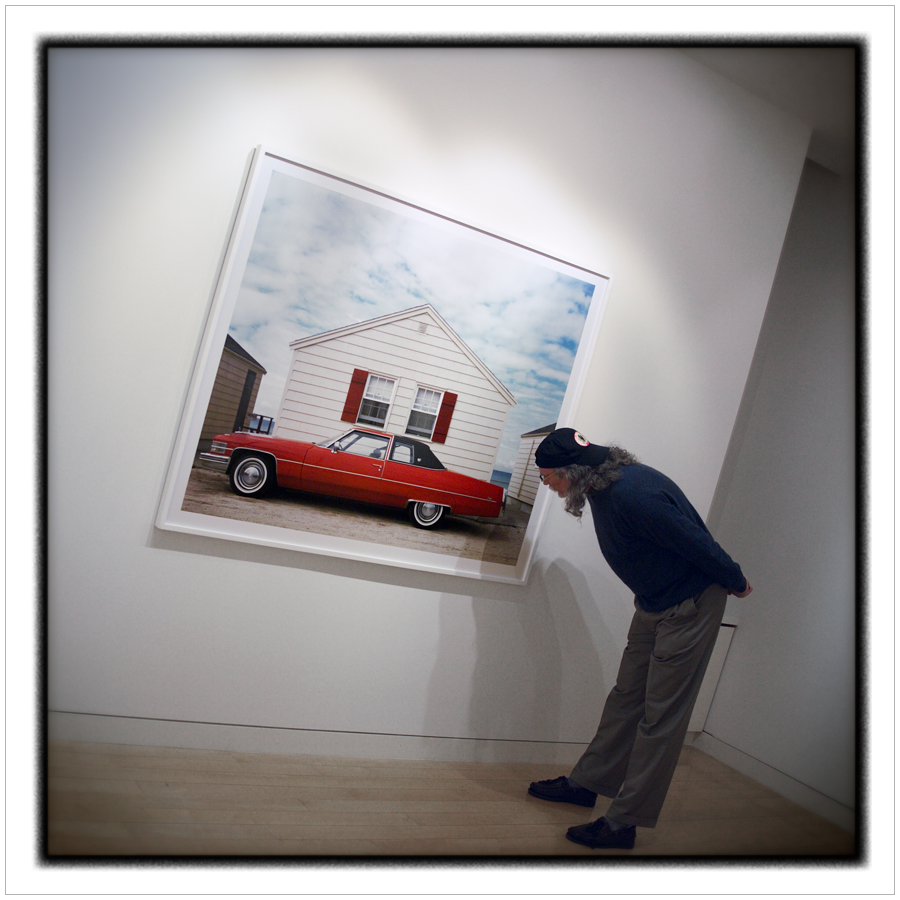parking lot booth ~ WIldwood, NJ (embiggenable) • iPhone
hotel hall~ Rayham, Mass. (embiggenable) • iPhone
In a recent post I wrote about a book of polaroid pictures, LEGACY of LIGHT, that I recently acquired. In the preface of that book, Constance Sullivan, the then (c.1987) Publications and Exhibitions Director of Polaroid Corporation, wrote (in part):
The very hardest thing about instant photography as a serious mode is probably how easy it is. Where so much effect comes effortlessly, the narrow range of choice that remains must be brought to white heat. Like abstraction in painting and "free verse" in poetry, instant photography is so simple that only those with a certain genius can really master it.
In this entry, it is my intent to apply much of that excerpt to iPhone picture making. But first, a few words about the statement itself....
re: "how easy it is" / "so simple". iMo, making pictures has been "easy" ever since the advent of roll film. As KODAK advertised at that time, You push the button, we do the rest. I would also offer an opinion that the making of "serious" pictures has always been "easy" (with the exception of those who print with arcane / legacy materials) inasmuch as those with a "certain genius" are "just" following their innate vision (their way of seeing) and making pictures of what they "see".
re: "narrow range of choice", Again iMo and assuming she is referring to the limited camera setting options on Polaroid cameras, she is correct. However, at the time she is also not correct inasmuch as, it seems to me, that most of the Polaroid pictures in the book were made with "real" cameras (medium format roll film and 4x5/8x10 view cameras) using professional Polaroid products-aka: sheet films-with Polaroid film backs. In that case, all of the normal camera choices were available.
However, she is correct, re: once any Polaroid film is processed there are no processing choices. At that point, what you see is what you get. There were a few exceptions such as the manipulation SX-70 film emulsion using pointed objects or, as some professional Polaroid film users (myself included) did, making emulsion transfer prints or simiar techniques.
All of that written, on to my point, re: adapting Sullivan's statement to iPhone (or similar)....
Most certainly, making pictures with the iPhone is very simple/easy. There are only a few camera controls, primarily selecting focus and adjusting exposure. Some camera apps give the user many "real" camera-like controls, but I rarely use them because I like to keep it simple. Much like the original KODAK cameras, I press (touch) the button and, in this case, the machine does the rest.
Unlike Polaroid picture making, the digital files created on the iPhone have some rather serious processing options with the use of one of many good processing apps. I use Snapseed to do "normal" processing on my files. I do not use any of the Effects options. Many do.
In fact, in my perusal of online photo sites-sites like Instagram which is used by a host of "serious" picture makers-it seems that the majority of iPhone (or similar) users use lots of effects apps to create their pictures. Whether this is so due to lack of a real "certain genius" or the use of effects as a integral part of their vision OR, more likely, merely as means of getting "likes" is hard to determine (for me).
That written, re: the use of an iPhone or "real" camera (no matter the lack or abudance of choices), to my eye and sensibilities, the best pictures are those made by picture makers with a "certain genius" which enables them to see things and picture and present them in a manner which transcends, with a sense of visual erotics (not sexual-read Susan Sontag's Against Interpretation essay), the literal specificity of a their depicted referent(s).

